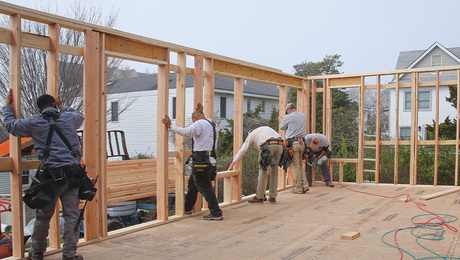HEAT TRANSFER QUESTION – WILL DRYWALL OVER PLASTER SIGNIFICANTLY INTERFERE?
Solid, high quality brick, stone house – well maintained – about 80 years old – 4000 sq ft – copper hot water heat in ceiling – plastered over (using metal lath) – ceiling cracking and sagging in 14 x 16 bedroom – but not to the point of falling – temporarily propped up – insulation almost 20 inches thick in attic (combination of fiberglass and blown in). Rafters are 12 inches on center NS with 2x2s running EW 12 inches on center with copper pipes in space.
Here’s the question: Somebody has told the customer that the ceiling has to be re-plastered rather than applying drywall over surface because of heat transfer. Are they right? Is this an accepted fact or just an opinion?
This room is a small percentage of the house, so a little drop in heat transfer surely wouldn’t make that much difference would it? (I don’t think this ceiling can be adequately repaired and held up using plaster washers then skimming on a layer of “Fiba-fuse”
Another side question: since there is metal lath on entire ceiling any ideas on the best way to locate pipes and framing (since a magnet or metal dector won’t work)? The attic is accessible but the insulation would make it hard to locate from attic (though that may be the best sure way)
(I am not trying to get the job, just trying to get some counsel from those who know)



















Replies
Yes and no. Drywall is a very poor insulator, and on par with plaster -- about 0.45 for 1/2 inch, vs 0.32 for 1/2 inch of plaster.
The problem is that, if you do not have very good contact between the plaster and the drywall, you can introduce another 0.5 or so R, due to the airspace between the two. Not a killer, but something to be wary of.